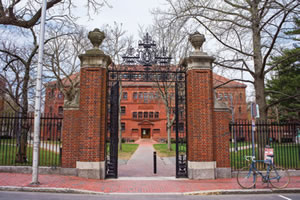A Solution for Leaky Ductwork

Leaky ductwork connected to a new air handling unit in
Girguis Lab at Harvard University was fixed with a new
approach to duct sealing.
At Harvard University’s
Girguis Lab, engineers had
just installed a new 8,500
CFM air handling unit that was meant
to supply heat to the lab and an adjacent
facility. When the unit was brought online,
however, its fan was operating at around
97 percent of capacity with little effect—and that was even before the system was
connected to the adjacent facility. It was
determined that leaks in the ductwork were
reducing static pressure to such a degree
that air couldn’t reach its destinations.
With ducts hidden under insulation and
behind layers of pipes, fixing those leaks
seemed an impossible task.
Fortunately, the mechanical contractors
on the job had heard about a new approach
to duct sealing called Aeroseal that worked
from the inside of the air shafts to locate
and seal leaks.
In just a matter of days, the problem
was fixed. The system’s duct leaks were
quickly reduced from more than 5,800
CFM down to 429 CFM—a 98-percent
reduction. The AHR fan now operated at
only 37 percent of capacity. The system
was quieter, and university engineers were
relieved.
“I would absolutely call this a project
saver,” says John Holliser, senior capital
project manager for Harvard. “Our only
other option was to tear down walls and
demolish the building structure in order
to access the leaky ductwork. We were very
pleased with the results and I honestly
don’t know how we would have solved this
issue if the Aeroseal technology wasn’t
available.”
aeroseal.com
This article originally appeared in the College Planning & Management July/August 2019 issue of Spaces4Learning.